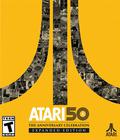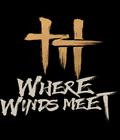Hidetaka Suehiro, better known to others as Swery or Swery65, doesn't have much of a gameography as far as writing and directing titles is concerned. He's been involved in the scenarios for The Last Blade series, and he's also been a designer for titles like Tomba 2 and Lords of Arcana. He's only had two games where he's been labeled as writer and director. The first was Spy Fiction, a game that was aimed at Western audiences but flew so far under the radar that most would be forgiven for not remembering it. The second was Deadly Premonition, a game that was simultaneously panned for its poor technical issues while praised for the quirky but intriguing story. That latter game earned him a cult following of sorts and made people curious about his next game. D4: Dark Dreams Don't Die is that title, and fans who have been waiting for his next work will not be disappointed.
You play the role of David Young, a man who has a very strange fate in store for him. Two years ago, as a narcotics officer with the Boston Police Department, you witnessed your wife's murder. You were shot in the head, but you survived with no real recollection of the events. You remember that her dying wish was for you to find a mysterious figure named D. You've also gained an uncanny ability to use objects, or "mementos," to travel to the past and solve crimes. Now a private detective, your goal is to solve all of the crimes that come your way in hopes of finding D and avenging your wife's death.
On the surface, the story seems typical. The tutorial starts with a young girl walking on thin ice and about to fall into a frozen lake. It switches over to David's view in the present, and we get a brief explanation of the story up to that point. Get past some of the basics, and the story introduces the kind of quirky characters who are expected in Swery's work. A young woman who behaves like a giant cat, a cop who can pack away food like a competitive eating champion, and a fashion designer who treats a mannequin like a human being are just some of the characters you'll meet in your investigations.
The odd cast of characters complements a story that goes through lots of tonal shifts but still makes sense. There are times when the game touches on being dramatic, such as when David reminisces about his wife. It goes for absurd humor, such as when David is attacked by Amanda, the cat lady who has a live mouse in her mouth when you first meet her. There are times when the game gets serious, such as when David solves a puzzle, and times when it's bizarre, like when you encounter a tall guy in a surgeon's mask who speaks slowly and plays with silverware. In short, the tale never lets the player feel comfortable in one mood for very long.
D4 plays like a point-and-click adventure game but is presented in a third-person, over-the-shoulder view. You walk over to specific spots by clicking on the footstep icon, and you look around the environment for objects to interact with and people to talk to. Object interaction usually leads to more information about the case or the next set of objects to investigate. Other times, it can lead to finding collectible tidbits, like magazine articles that contain general information or knowledge about specific characters. Talking to certain people also leads to a similar thing, and you have a few options to select from in your dialogue tree.
The game does quite a few things to streamline the adventure game mechanics. Placing the cursor over important objects or people reveals clues and descriptions. While you interact with objects, you never have to worry about keeping an inventory, and you don't have to think about how object A can combine with object B to solve puzzle C. To that end, the change also means that obtuse puzzles aren't here, so most of the quandaries you encounter actually have logical solutions.
Thanks to the streamlining, the title does a few other interesting things. Side-quests, which aren't usually part of point-and-click adventure games, are abundant here, and they range from answering quizzes to participating in capturing clovers on-screen. There are even a few where you do nothing but listen to a conversation to complete it. Cut scenes also become interactive affairs since you can usually ferret out a clue or two, and there are quite a few quick time events (QTEs) to plow through. Health meters are important, as you have three of them. Aside from general health, you have a meter that determines how many times you can use your detective vision to ferret out clues, and you have a meter that monitors your hunger, a somewhat unusual limiting factor since you need food to replenish that meter. It's easily accessible since you find plenty of it in the environment, but you can also warp back home at any time and get something from your kitchen to eat, so it's a mystery as to why this gameplay mechanic exists.
When it was first announced, the game was billed as a Kinect title, and even though Microsoft no longer has much of an interest in promoting the once-mandatory peripheral, D4 shows how you can make it a viable control scheme. You can hover over an object to get its description and clues, and clicking something is as simple as grabbing it or, in some cases, pushing it. You can also speak out your lines when conversing with people, and that works very well. Swiping in any direction changes your viewpoint, and the device even reads body shifts to tweak the camera. Swipes also play a part in performing simple tasks, like opening doors and cabinets. The appeal to using the Kinect is during those QTEs, since you can easily mimic lots of motions. Most of the things you do will be swipes, but there are a few situations where you need to push, grab, and even shout at the device to complete the tasks. Each movement is read with practically no errors, transforming a mundane thing into something a bit more exciting.
If you are really averse to using the Kinect or you purchased a console without one, you can still play the game with a standard controller. Cursor movement is a little slower with the analog sticks as opposed to your hands, and regular actions feel slow as well. It's faster to look around with the right analog stick, so there's an advantage there, and objects that can be examined are made more visually apparent when the controller is used. It falters during QTEs since the necessary reaction time is quicker and the analog stick movements are read slower than hand and arm movements.
If there is one disappointing thing about the game, it's that this is just season one of the title. You have the prologue, which is rather short, and two chapters comprise the whole title. The chapters are rather short, but at least you can replay them once you beat them in order to uncover more clues about the world or finish up the extra quests. What really hurts is that the game ends on a cliffhanger, and with no known release date for the second season, who knows when we'll see the conclusion of this case?
For those expecting the game to follow Deadly Premonition in the graphics department, prepare for some disappointment because D4 looks quite good. Similar to The Walking Dead, the game employs a comic book style that has a varied color scheme with black lines for character borders and extra definition. It does some pretty fancy tricks with it, like adding multiple boxes simultaneously so it looks like a comic book page with characters and multiple angles being shown at the same time. The frame rate holds steady, and the animations are much more believable, including moments when the action is unbelievable odd. The game lacks some anti-aliasing, however, so expect to see lots of jagged lines.
On the sound front, the title is all over the place as far as style goes. This is especially true for the soundtrack, which can go from a mournful ballad to Irish rock and an upbeat TV show theme at the drop of a hat. None of it is out of place, but the quirkiness of the tonal shifts adds to the game's odd character. Meanwhile, the voice work is quite good, as they fit their expected roles nicely without a hint of camp, despite what the dialogue may indicate. There are times when David's Boston accent may sound a little off, but it's spot-on most of the time, and the performances are on a much higher level than Swery's previous titles.
D4: Dark Dreams Don't Die may be a short game, but it takes strides to be memorable. The presentation is a little rough in parts, but it's still miles better than what the developers had come up with before. The gameplay mechanics are varied enough to keep from being monotonous, but they're also streamlined so those who dislike the tediousness of most adventure games can get into this title. The story, which is equal parts odd and compelling, will draw you into the game. Fans will love this title, and those who want to know what a good Kinect game looks like will enjoy this experience.
Score: 8.0/10
More articles about D4: Dark Dreams Don't Die











 D4: Dark Dreams Don't Die is an episodic noir mystery where the protagonist can go back in time, try to use this ability to solve his wife's murder and prevent it from ever occurring.
D4: Dark Dreams Don't Die is an episodic noir mystery where the protagonist can go back in time, try to use this ability to solve his wife's murder and prevent it from ever occurring.


























